Title : Dengue fever uncovers a late diagnosis of sickle cell disease – A case report
Abstract:
Background: Sickle cell disease (SCD) is a hereditary hemoglobinopathy typically presenting in early childhood. However, individuals with higher fetal hemoglobin (HbF) levels may exhibit a milder phenotype, delaying recognition until adulthood. Co-infections, such as dengue fever, can exacerbate the underlying pathology of hemoglobinopathies through inflammatory, hemolytic, and endothelial mechanisms, precipitating rare complications including splenic infarction and thrombosis.
Case Presentation: We report the case of a 28-year-old man with no prior medical history who presented with a one-week history of fever, abdominal pain, and myalgia. Screening confirmed dengue fever via NS1 antigen testing, and abdominal ultrasound demonstrated splenomegaly with features of acalculous cholecystitis. Despite initial supportive management, his symptoms persisted. Further imaging revealed near-total splenic infarction, distal splenic vein thrombosis, and proximal celiac artery occlusion. Laboratory results indicated hemolysis, prompting hemoglobin electrophoresis, which confirmed sickle cell disease with HbS of 79% and HbF of 16.9%. The patient was treated with anticoagulation, antimicrobials, and supportive care and made a full recovery. He was subsequently counseled regarding SCD complications, lifelong anticoagulation, and family screening.
Discussion: This case emphasizes the potential for dengue fever to unmask latent SCD in adulthood by triggering hemolytic and thrombotic complications. Elevated fetal hemoglobin likely masked typical SCD features, delaying diagnosis. The endothelial and inflammatory burden induced by dengue combined with the inherent hypercoagulability of SCD contributed to fulminant vascular complications. This case illustrates the importance of evaluating unexplained thrombosis or splenic infarction in dengue patients for underlying hemoglobinopathies.
Conclusion: In regions where dengue fever and SCD co-exist, clinicians should maintain high suspicion for hemoglobinopathies in dengue patients with atypical presentations, especially thrombosis or splenic involvement. Early diagnosis enables timely intervention, family counseling, and tailored long-term management.
Keywords: Sickle cell disease, dengue fever, latent presentation, splenic infarction, thrombosis, hemoglobin electrophoresis, case report.



